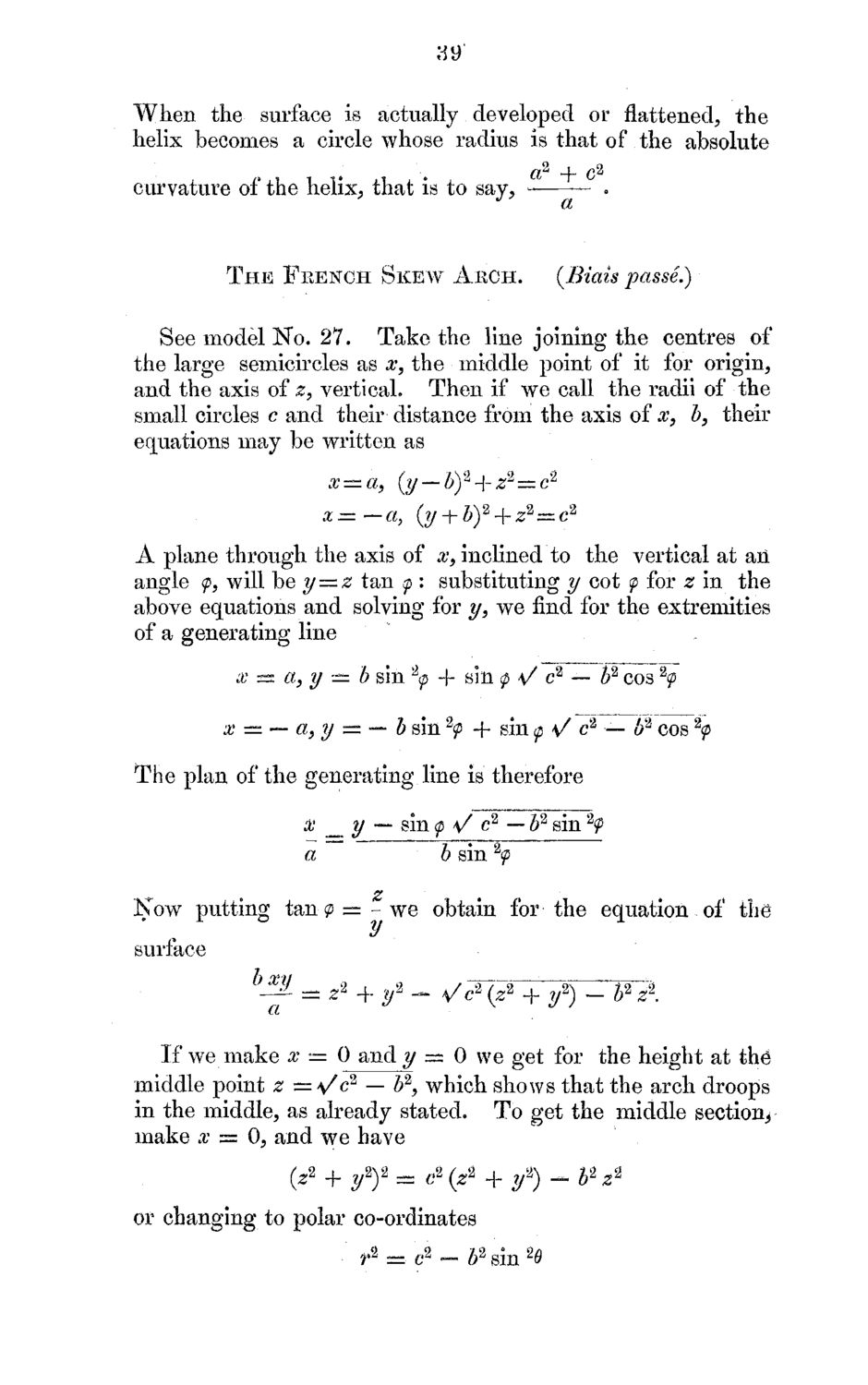| |
| |
Caption: Mathematical Models Catalog of a Collection of Models of Ruled Surfaces
This is a reduced-resolution page image for fast online browsing.

EXTRACTED TEXT FROM PAGE:
:d i W h e n the surface is actually developed or flattened, the helix becomes a circle whose radius is that of the absolute a2 + c2 curvature of the helix, that is to say, . T h e French Skew Arch. (Biais passe.) See model No. 27. Take the line joining the centres of the large semicircles as x, the middle point of it for origin, and the axis of z, vertical. Then if w e call the radii of the small circles c and their distance from the axis of x, b, their equations m a y be written as x — a, (y — b)2-i~z2=zc2 z = z — a, (g-\-b)2-\-z2 = c2 A plane through the axis of x, inclined to the vertical at an angle <9 will be y = z tan q>: substituting y cot < for z in the p p above equations and solving for y, w e find for the extremities of a generating line x = a, y — b sin 2<p + sin <p */ c2 — b2 cos 2<p x — — a, y — — b sin 2<p -f sin <p s/ c2 — 62 cos 2$s The plan of the generating line is therefore x __ y — sin <p */ c2 — b2 sin 2^ a b sin 2^ Now putting tan <p = - we obtain for the equation of the surface 7 ^ - z2 + tf _ ^ ^ 2 - q r p y ~ z r F ? . If we make a? •— 0 and y — 0 we get for the height at the" middle point z = \/c2 — b2, which shows that the arch droops in the middle, as already stated. T o get the middle section^ m a k e x = 0, and w e have (z2 + y2)2^ c2(z2 + y2) -b2z2 or changing to polar co-ordinates t2 =• c2 — b2 sin 20
| |